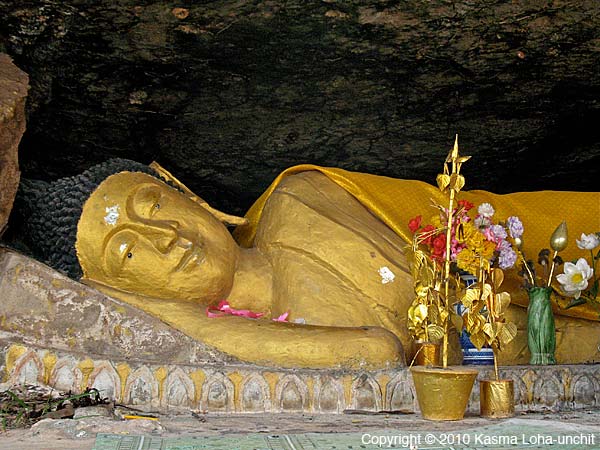(Probably there are better sites, I just want to share "lying down to meditate"). I, like most of the occidentanles I have difficulty in posture, overcoat "lotus flower" ...
Lying down to meditate
If you lie down to meditate — especialy mediating on your back — you’ll more than likely end up having a nice snooze, which may be pleasant but it’s not going to bring about a long-term change in the quality of your life.
However some people have serious back problems — either short- or long-term — and even sitting in a chair isn’t an option. I’ve been in that situation myself because of back pain that surfaces from time to time. By serious problems I mean intense nagging pain that affects your life not just when you’re trying to meditate. If it only affects you when you’re trying to meditate then you probably just need to adjust your posture.
We can learn to work with pain in meditation, but sometimes the pain is overwhelmingly powerful and dominates the mind entirely. And pain is also sometimes a sign that we’re causing damage to the body. So there can be very good reasons for meditating in a supine position.
There are two ways to lie down to meditate: on your back, or (the more traditional method) on your side.
Lying down to meditate on your back
If you are one of those people with serious back problems then you might well want to try lying down to meditate. You’ll need to have your head resting on something firm and yet padded. A thin cushion on a book can work well, as can a firm foam block. A book without padding will work for short meditations but over longer periods the back of your head will start to hurt. Even if you’re on a carpeted surface you might want to have a folded blanket or some other form of padding between your body and the floor.
The best position for lying down to meditate is the Alexander Semi-Supine position (illustrated above), where your knees are bent and pointing to the ceiling. The feet should be flat on the floor and should be roughly where your knees would be if your legs were straight. If your legs tend to collapse outwards as you relax then you might want to try turning your heels outwards a little, keeping your toes in place.
As mentioned, you’re much more likely to fall asleep if you meditate lying down on your back. This danger becomes even more likely if you keep your focus in the belly while paying attention to the breath, so I’d advise you to pay attention to the breath in the upper chest, throat, head, or in the nostrils. This won’t guarantee that you’ll stay awake but it makes it less likely that you’ll fall asleep.
Meditating lying on your side
Oddly, very few people seem to try meditating lying on their side, even though images of the Buddha doing this are abundant. This may be because the Buddha passed away while meditating on his side, and then people see this posture they don’t think “that’s the Buddha meditating on his side” but “that’s the Buddha dying.” So the connection between this posture and meditation tends to get lost.
Miniature statue of the Buddha lying down to meditate
Actually the Parinirvana (death) statues and the meditation statues are different. In death, the Buddha’s hand is no longer supporting his head. In the image above you can see that the Buddha is clearly alive!
This is actually quite a comfortable posture to meditate in. I’ve used this when I’ve been sick, or when I’ve wanted to meditate at the end of the day and have felt physically exhausted. Here are some basic pointers:
Lie on your right side.
You’ll need to have some cushioning under the whole body. You can lie on a mattress or a couple of zabutons (meditation mats) laid end-to-end or even a folded blanket or two.
The left arm rests on top of the body.
The right elbow rests on the floor, with the hand supporting the head.
The knees should be slightly bent. Bend the upper knee a little more than the lower knee so that there isn’t undue pressure between your ankles and between your knees.
You’ll need to have a cushion under your right armpit or upper chest, to take some of your body’s weight.
The pressure of your hand on your head may cause discomfort, so you’ll probably need to move your hand from time to time. Be aware of the intension to move, and be mindful of the movements themselves.
If you have neck problems this posture is not recommended, but for most back problems it should be fine.
Someone on Facebook said that she found this a good way to meditate during her pregnancy, and that she’d meditated lying on her side for six months. But it’s probably a good idea for pregnant women to lie on the left, rather than the right, side. Sleeping on the left side has been shown to reduce the incidence of still births, and it would be wise to assume this applies to meditation as well.
In this position you’re far less likely to fall asleep compared to when you lie on your back, and it’s easier to maintain a sense of mental clarity.
http://www.wildmind.org/posture/lying-down







